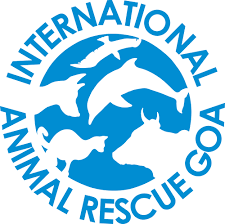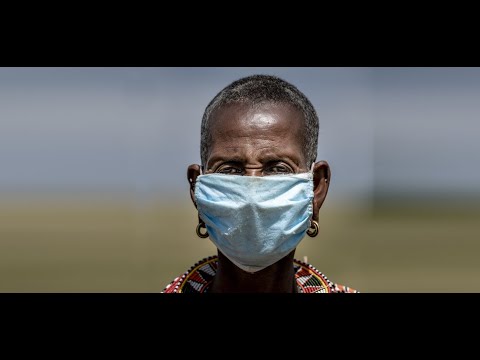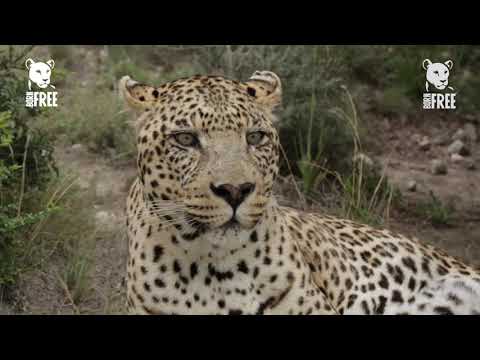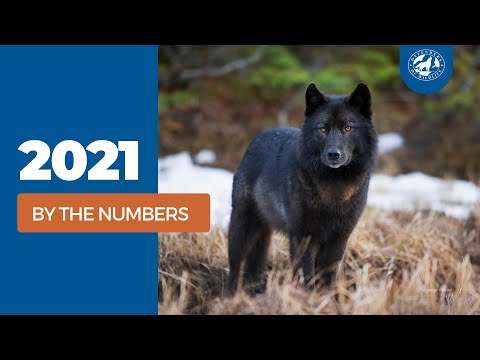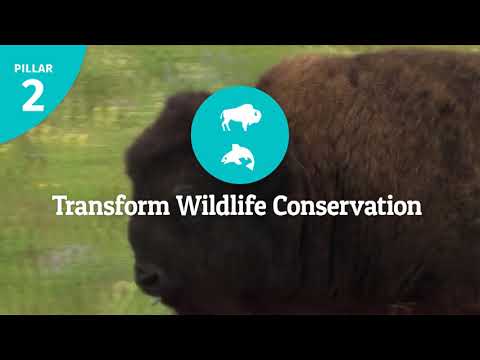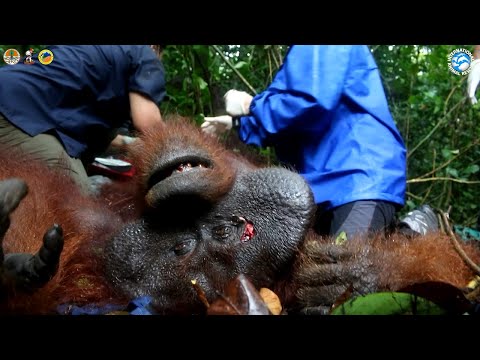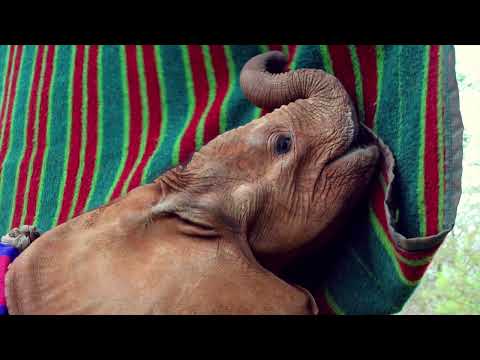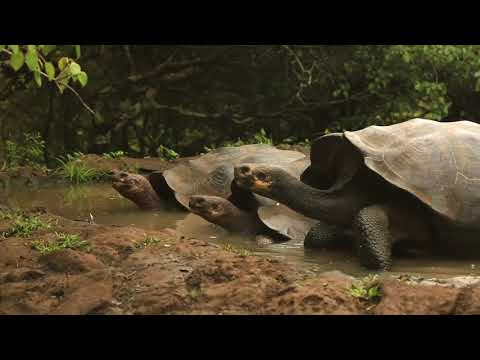9 Best Charities to Symbolically Adopt a Wild Animal in Need (Complete 2024 List)
Impactful Ninja is reader-supported. When you buy through links on our site, we may earn an affiliate commission.
Learn more
Learn more
.
Hey fellow impactful ninja ? You may have noticed that Impactful Ninja is all about providing helpful information to make a positive impact on the world and society. And that we love to link back to where we found all the information for each of our posts. Most of these links are informational-based for you to check out their primary sources with one click. But some of these links are so-called "affiliate links" to products that we recommend. First and foremost, because we believe that they add value to you. For example, when we wrote a post about the environmental impact of long showers, we came across an EPA recommendation to use WaterSense showerheads. So we linked to where you can find them. Or, for many of our posts, we also link to our favorite books on that topic so that you can get a much more holistic overview than one single blog post could provide. And when there is an affiliate program for these products, we sign up for it. For example, as Amazon Associates, we earn from qualifying purchases. First, and most importantly, we still only recommend products that we believe add value for you. When you buy something through one of our affiliate links, we may earn a small commission - but at no additional costs to you. And when you buy something through a link that is not an affiliate link, we won’t receive any commission but we’ll still be happy to have helped you. When we find products that we believe add value to you and the seller has an affiliate program, we sign up for it. When you buy something through one of our affiliate links, we may earn a small commission (at no extra costs to you). And at this point in time, all money is reinvested in sharing the most helpful content with you. This includes all operating costs for running this site and the content creation itself. You may have noticed by the way Impactful Ninja is operated that money is not the driving factor behind it. It is a passion project of mine and I love to share helpful information with you to make a positive impact on the world and society. However, it's a project in that I invest a lot of time and also quite some money. Eventually, my dream is to one day turn this passion project into my full-time job and provide even more helpful information. But that's still a long time to go. Stay impactful,Affiliate Disclosure
Why do we add these product links?
What do these affiliate links mean for you?
What do these affiliate links mean for us?
What does this mean for me personally?
![]()
It is estimated that one-quarter of the earth’s mammals, 1 in 6 bird species, and 40% of all amphibians are under threat of extinction. Charities worldwide are dedicated to restoring the world’s biodiversity but they need your help. One effective way to contribute is to symbolically adopt a wild animal to provide vital funding for conservation work. So we had to ask: What are the best charities to symbolically adopt a wild animal in need?
The best charities to symbolically adopt a wild animal in terms of overall impact are the David Shepherd Wildlife Foundation and Born Free. Charities such as the World Wildlife Fund and International Animal Rescue do amazing work rescuing and caring for abused wild animals.
Whether you want to preserve the vast biodiversity on our planet, protect wild animals from the cruel entertainment industry, or ensure an orphaned baby animal receives the care it needs, there is a charity for you. Keep reading to learn more about what the best charities to symbolically adopt an animal are all about, how they work, and what your best way would be to make a contribution.
Here’s What All the Best Charities to Symbolically Adopt a Wild Animal Have in Common
The charities on this list were chosen based on their mission, impact and transparency ratings, and achievements.
They operate all over the world, from North America to Africa, restoring critical habitats and safeguarding populations of the most endangered animal species.
Many of the charities on this list focus their attention on rescuing abused wild animals from poachers and harmful wildlife trades. Others focus their efforts on creating innovative structures and running educational programs to reduce human-wild animal conflict.
Yet they all share the same goal – to preserve the diversity of life on earth for generations to come.
These Are the 9 Best Charities to Symbolically Adopt a Wild Animal in Need in 2024
Below are our favorite charities to symbolically adopt a wild animal in need (you can click on their link to directly jump to their section in this article):
Best Charities to Symbolically Adopt a Wild Animal in Need
(At the end of this article we’ll also share our six-step approach on how you can select the best charity to support.)
David Shepherd Wildlife Foundation: Funding Key Conservation Projects
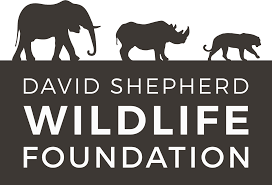
🔎
Their transparency & ratings:
According to their financial report, the David Shepherd Wildlife Foundation spent 50.4% of its expenditure on conservation efforts, 20.4% on generating funds, and 13.5% on education.
“To increase awareness around the world about the need to protect and conserve wildlife and their habitats.”
David Shepherd Wildlife Foundation
⚒️
What they do:
The David Shepherd Wildlife Foundation works with local communities in Asia and Africa to reduce human-wildlife conflict through their education and awareness programs. The charity also funds undercover investigations into the illegal wildlife trade and poaching syndicates to tackle all forms of wildlife crime. In addition, the charity funds species-specific conservation projects that aim to protect some of the world’s most endangered animals including pangolins, chimpanzees, painted dogs, and snow leopards.
🚀
What they’ve achieved:
To date, the David Shepherd Wildlife Foundation has invested more than $14 million into wildlife conservation projects. In 2020, the charity worked with 14 like-minded organizations to run 17 projects in 15 countries around the globe. In the same year, the charity’s rangers protected over 157,929 km of critical habitat which resulted in 80 animal rescues and the prevention of 408 human-wildlife conflict situations.
✨
Ways to contribute:
You can donate directly to the David Shepherd Wildlife Foundation through their website. You can also help protect critically endangered wildlife by symbolically adopting an animal or by sponsoring a ranger.
Born Free Foundation: Keeping Animals in the Wild
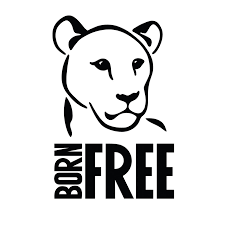
🔎
Their transparency & ratings:
The Born Free Foundation holds the Platinum Seal of Transparency from GuideStar as well as a 3-star rating from Charity Navigator.
“Working tirelessly to ensure that all wild animals are treated with compassion and respect and are able to live their lives according to their needs.”
Born Free Foundation
⚒️
What they do:
The Born Free Foundation runs regular campaigns to end captive wild animal suffering and calls for better legislation to stop cruel wildlife trades. Wherever possible, the charity rescues animals from unsuitable captive conditions and cares for them at one of their 14 sanctuaries, where they receive veterinary care and the freedom to roam large natural enclosures. In addition, the charity runs numerous field conservation programs for a range of animals including jaguars, lions, and tigers, through local community engagement and by improving livestock protection.
🚀
What they’ve achieved:
Today, the Born Free Foundation runs conservation projects, educational outreach programs, and wild animal sanctuaries in 20 countries around the world. Within their sanctuaries, the charity now cares for over 1,200 wild animals from fruit bats to tigers. In 2019, the Born Free Foundation erected 275 predator-proof bomas in the Amboseli region which have protected an estimated 32,500 livestock belonging to 2,500 people. This approach has allowed wild predator populations to thrive without the threat of retaliation.
✨
Ways to contribute:
You can donate directly to the Born Free Foundation through their website. You can also support the charity by symbolically adopting a wild animal or by purchasing items from their online shop.
Defenders Of Wildlife: Saving North America’s Wildlife
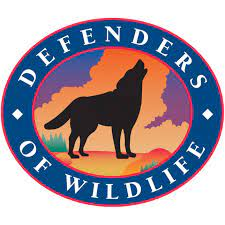
🔎
Their transparency & ratings:
Defenders Of Wildlife holds the Platinum Seal of Transparency from GuideStar, as well as a 3-star rating from Charity Navigator.
“Dedicated to the protection of all native animals and plants in their natural communities.”
Defenders Of Wildlife
⚒️
What they do:
Defenders Of Wildlife works on the ground and with government organizations to protect and preserve North America’s native wild animals and their habitats. In the Center for Conservation Innovation, the charity develops scientific strategies and technologies to create effective recovery plans for critically endangered species like Polar bears. Their habitat change detection tool allows conservationists to monitor land use in critical habitats and the charity also assists in the creation of wildlife corridors to mitigate human-wildlife conflict.
🚀
What they’ve achieved:
To date, Defenders Of Wildlife has developed over 100 collaborative projects to prevent human-wildlife conflicts with grizzly bears and wolves, which has directly impacted population levels. Furthermore, in 2021 the charity successfully advocated for a 640% expansion on endangered Orca habitat across the coasts of Washington, Oregon, and California. In the same year, they transferred 56 endangered Yellowstone Bison to tribal lands in Oklahoma and Washington, to save them from slaughter.
✨
Ways to contribute:
You can donate directly to Defenders Of Wildlife through their website. You can also support the charity by purchasing an endangered species adoption kit or by signing up to become a member of the charity.
World Wildlife Fund: For your World
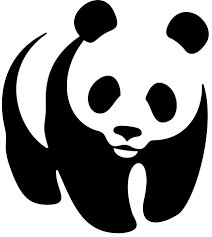
🔎
Their transparency & ratings:
The World Wildlife Fund holds the Platinum Seal of Transparency from GuideStar as well as a 3-star rating from Charity Navigator.
“To conserve nature and reduce the most pressing threats to the diversity of life on Earth.”
World Wildlife Fund
⚒️
What they do:
The World Wildlife Fund runs numerous conservation projects to protect endangered animal species, by mitigating human-animal conflict, monitoring animal populations, and supporting the protection of vital habitats. They focus their attention on the most vulnerable species that also support the survival of other species, such as tigers, rhinos, whales, and sea turtles. In addition, the charity provides various online educational resources to teach children about conservation.
🚀
What they’ve achieved:
Since its founding, the WWF has continued to fight for the protection of critical habitats and the species that reside in them. In 2020, the charity raised $6,446,944 to support communities in Kenya and Tanzania to coexist with native wildlife. This work has resulted in Kenya’s Black Rhino population increasing to 853 individuals (up from 350 in the 1980s). In 2021, thanks to the advocacy efforts of the World Wildlife Fund, the US government significantly increased funding for international wildlife conservation.
✨
Ways to contribute:
You can donate directly to the World Wildlife Fund through their website. You can also support the charity by symbolically adopting an endangered animal, or you can inspire your children to develop a love of animals by signing up for the charities’ Go Wild magazine.
World Animal Protection: Ending Animal Suffering
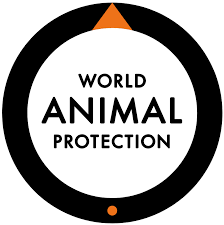
🔎
Their transparency & ratings:
World Animal Protection holds the Gold Seal of Transparency from GuideStar and a 3-star rating from Charity Navigator.
“To create a better world for animals.”
World Animal Protection
⚒️
What they do:
World Animal Protection advocates for the end of cruel industries that cause needless suffering to both wild and captive animals, including the entertainment trade, wild animal tourism, and the global wildlife trade. The charity also provides disaster relief for animals in conflict zones or areas affected by natural disasters. They do this by providing emergency veterinary treatment or by evacuating animals to safer areas. In addition, World Animal Protection runs two sanctuaries in Romania and Pakistan for bears rescued from the bear bile industry and the entertainment trade.
🚀
What they’ve achieved:
Since 2005, World Animal Protection has reduced the number of bears held captive on bear bile farms by 90%. They now care for over 100 bears at their two sanctuaries. In 2020, the charity assisted over 3 billion animals after 15 bush fires raged through Australia. In the same year, they also developed the Travel Back Better website which helps companies to avoid cruel wildlife tourist venues.
✨
Ways to contribute:
You can donate directly to World Animal Protection through their website. You can also support the charity’s work by symbolically adopting one of the bears at their sanctuaries, or by playing the charity’s weekly lottery.
National Wildlife Federation: Protecting America’s Wild Diversity
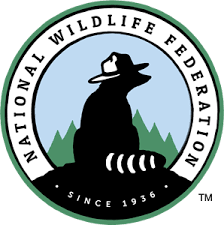
🔎
Their transparency & ratings:
The National Wildlife Federation holds the Platinum Seal of Transparency from GuideStar and a 3-star rating from Charity Navigator.
“Uniting all Americans to ensure wildlife thrive in a rapidly changing world.”
National Wildlife Federation
⚒️
What they do:
The National Wildlife Federation is working to reverse the catastrophic decline of America’s wildlife by restoring critical habitat and by creating new wildlife corridors through their innovative Adopt A Wildlife Acre Program. In addition, the National Wildlife Federation advocates for the strengthening of legislation to protect America’s vulnerable wildlife, including bison, red wolves, and mule deer. The charity also works to inspire the next generation of young conservationists through their interactive ‘Ranger Rick’ initiative.
🚀
What they’ve achieved:
Since its founding, the National Wildlife Federation has continued to campaign for better protection for America’s wildlife. As a result, the Great American Outdoors Act was passed in 2020, which promises an investment of $9.5 billion to enhance critical wildlife habitats in every state. In the same year, the charity relocated 350 threatened Bison back into tribal lands and was heavily involved in the development of the largest wildlife corridor in the world which has created a safe passage for wild animals to cross California.
✨
Ways to contribute:
You can donate directly to the National Wildlife Federation through their website. You can also support the charity by choosing to symbolically adopt a wild animal. Their vast options include Polar bears, sea turtles, and Barking tree frogs.
International Animal Rescue: Rescuing and Rehabilitating Captive Wild Animals

🔎
Their transparency & ratings:
World Animal Protection holds the Platinum Seal of Transparency from GuideStar as well as a 4-star rating from Charity Navigator.
“A world where humans and animals coexist in sustainable ecosystems.”
International Animal Rescue
⚒️
What they do:
International Animal Rescue saves animals from cruel exploitation situations, as well as from wild places where they are vulnerable to habitat loss and poaching. International Animal Rescue staff work on the ground, cutting bears from poaching traps in Armenia and India, treating injured Howler monkeys in Costa Rica, and saving the critically endangered Slow Loris from the illegal wildlife trade. The animals are then given veterinary treatment and rehabilitated at one of their sanctuaries until they are ready to be released back into the wild.
🚀
What they’ve achieved:
International Animal Rescue runs the largest Slow Loris sanctuary in the world, caring for over 200 individuals in Indonesia. Since its launch, the charity has also rescued and rehabilitated 150 orangutans and 600 bears. In 2009, alongside Wildlife SOS, International Animal Rescue made history by ending the 400-year-old tradition of Indian dancing bears. All of the rescued bears now reside at the charity’s sanctuaries.
✨
Ways to contribute:
You can donate directly to International Animal Rescue through their website. You can also support the charity by symbolically adopting a resident at one of their sanctuaries, or by volunteering.
Sheldrick Wildlife Trust: Rescuing and Rehabilitating Orphaned Elephants and Rhinos
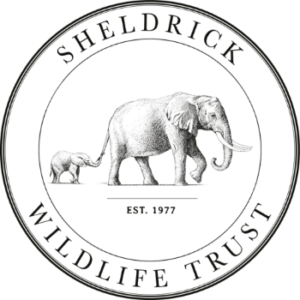
🔎
Their transparency & ratings:
The Sheldrick Wildlife Trust holds the Platinum Seal of Transparency from GuideStar. The charity also has a 4-star rating from Charity Navigator.
“Embracing all measures that complement the conservation, preservation, and protection of wildlife and habitats.”
Sheldrick Wildlife Trust
⚒️
What they do:
The Sheldrick Wildlife Trust runs anti-poaching efforts, mitigates human-wildlife conflict, and provides veterinary assistance to wild animals in need across Kenya. At the heart of the charities’ conservation efforts is their Orphan Project, through which they rescue and rehabilitate young rhinos and elephants orphaned by poachers. At their four specialized Orphan Units, staff nurse vulnerable young calves back to health until they are ready to be released into the wild.
🚀
What they’ve achieved:
To date, the Sheldrick Wildlife Trust has successfully rescued and raised 265 orphaned elephants and 17 rhino calves across Kenya. In addition, the charity has released 172 orphans back into the wild which has resulted in 47 wild births. In 2020, the Sheldrick Wildlife Trusts’ anti-poaching teams removed 9,067 snares, confiscated 131 weapons, and made 191 arrests.
✨
Ways to contribute:
You can donate directly to the Sheldrick Wildlife Trust through their website. You can also support the charity’s work by symbolically adopting an orphan at one of their sanctuaries or by purchasing items from their online shop.
Galapagos Conservancy: Restoring the Diversity of the Galapagos Islands
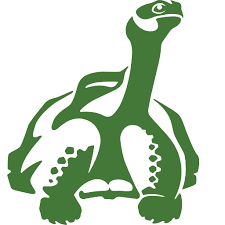
🔎
Their transparency & ratings:
According to their financial report, the Galapagos Conservancy spent 75% of its income on conservation programs and 14.9% on fundraising. The charity also has a 4-star rating from Charity Navigator.
“To protect the unique biodiversity and ecosystems of the Galapagos.”
Galapagos Conservancy
⚒️
What they do:
The Galapagos Conservancy is the only US non-profit organization focused exclusively on protecting the unique biodiversity of the Galapagos archipelago. They do this through a variety of wildlife and ecosystem conservation programs and by integrating sustainability education into local businesses and schools. Their Giant Tortoise Restoration Initiative builds on 50 years of research conducted at the Charles Darwin Research Station, to bring back the 15 tortoise species that once roamed the islands.
🚀
What they’ve achieved:
Thanks to the continuous dedication and research of the Galapagos Conservancy, a female Fernandina tortoise has been found and is now under protection. The species was believed to be extinct as no individuals had been spotted in over 112 years! In 2021, the charity was also integral to the 14.8 million acre expansion of the Galapagos Marine Reserve. The reserve now runs up to Costa Rica, creating a safe passage for a variety of endangered marine species including sea turtles, scalloped hammerhead sharks, and manta rays.
✨
Ways to contribute:
You can donate directly to the Galapagos Conservancy through their website. You also have the option to symbolically adopt a vulnerable animal which will support the vital conservation work carried out by the charity.
How Can You Select the Best Charities to Support?
The charities on the list are, we deem, the best charities that fight hunger globally. However, you may have a particular charity you want to support. Let’s look at what you can do to ensure your contribution has the most significant impact.
- Check out the charity website. Charities that are worthy of your donations are transparent in their mission and their figures. Familiarize yourself with their history, mission, and values. Their website usually is the best place to start.
- Identify the charity’s mission. Without a goal, the charity is likely to fail. If the charity’s mission isn’t clear, it’s probably worth looking for a charity that does have a clear mission.
- Check if the charity has measurable goals. An effective charity has clear goals. You want to know your donation will help the charity reach its goals. But if it doesn’t have targets, it’s likely to fail or squander your gift. The charity should be able to account for its spending and supply evidence of the work they do.
- Assess the successes or goals the charity has achieved. You wouldn’t invest in a business if it kept missing its targets. In the same way, charities are like this too. If no one is assessing a charity’s progress in reaching its targets, the chances are they’re not making a substantial positive change.
- Check the charity’s financials and stats. Trustworthy organizations will publish financial statements and reports each year. Some might be exempt from having to do so, but they should be able to provide them to public members who are interested in donating.
- Locate sources who work with or benefit from the charity. Word of mouth and first-hand experience of a charity’s work lets you know the charity’s quality. If you’re able to do so, check out the charity for yourself or speak to someone familiar with it. This way, your donation will go to the right place.
How Can You Best Support These Charities?
After you’ve made your decision, it’s time for you to decide on how you’d like to help the charities you’ve chosen. Check how you can help – each charity runs specific programs that have unique aims. Find out what the aim of such programs is and whether they are right for you.
Here are a few ways you can help your chosen charity:
- Donate money. You can find donation pages on the website of most charities. Your donation can be a one-time payment, or you can set it to be deducted regularly at different intervals. You can mostly pay via credit card, but some charities also take PayPal or Bitcoin payments.
- Buy their official merchandise. The charities can also raise money by selling merchandise. So, you can support them by buying the mugs, shirts, caps, pens, pencils, and any other such items they may be selling. Ideally, you should buy as much as you can to share and spread the word about the charity’s activities.
- Engage in volunteer work. As you’ve seen from our descriptions above, some charities engage in a lot of local and grassroots programs. You can help by taking on and organizing the program in your local area.
- Help their fundraising efforts. You can spread the word about the charity in your workplace, school, church, etc., and hold creative fundraising drives on social media or offline within your small circles.
- Share their stories. Most charities have compelling stories that you can share with your audience to attract more people to the cause.
Final Thoughts
Now it is up to you to select the charity that resonates most with you. And whichever charity you end up choosing and contributing to, we are sure that they will immensely appreciate your support. Hopefully, the information within this article has made this selection process a bit easier for you to support charities dedicated to fighting hunger globally – based on the causes that matter most to you.
Stay impactful,

PS: Finally, I want to leave you with a thought-provoking TED talk from Dan Pallotta, a leading philanthropic activist and fundraiser, about what is wrong with the way we think about charities – and what we can do about it:
Sources
- David Shepherd Wildlife Foundation: Home page
- David Shepherd Wildlife Foundation: Impact Report 2020-2021
- David Shepherd Wildlife Foundation: Community Engagement
- David Shepherd Wildlife Foundation: Fighting Wildlife Crime
- David Shepherd Wildlife Foundation: Protecting Species
- David Shepherd Wildlife Foundation: Donate
- David Shepherd Wildlife Foundation: Adopt
- David Shepherd Wildlife Foundation: Sponsor a Ranger
- Born Free Foundation: Home page
- Born Free Foundation: About Us
- GuideStar: Born Free Foundation
- Charity Navigator: Born Free Foundation
- Born Free Foundation: Captive Animals
- Born Free Foundation: Wildlife Trade
- Born Free Foundation: Rescue & Care
- Born Free Foundation: Field Conservation
- Born Free Foundation: Where We Work
- Born Free Foundation: Annual Review 2018-19
- Born Free Foundation: Donate
- Born Free Foundation: Adopt an Animal
- Born Free Foundation: Born Free Shop
- Defenders of Wildlife: Home page
- Defenders of Wildlife: Jamie Rappaport Clark
- GuideStar: Defenders of Wildlife
- Charity Navigator: Defenders of Wildlife
- Defenders of Wildlife: Speaking for Wildlife
- Defenders of Wildlife: Center for Conservation Innovation
- Defenders of Wildlife: Habitat Patrol
- Defenders of Wildlife: Wildlife Corridors and Habitat Connectivity
- Defenders of Wildlife: 10 ways 2021 gave us hope for wildlife
- Defenders of Wildlife: 56 Bison transferred from Fort Peck to Tribal lands
- Defenders of Wildlife: Donate
- Defenders of Wildlife: Wildlife Adoptions
- Defenders of Wildlife: Become a member of Defenders of Wildlife
- World Wildlife Fund: Home page
- World Wildlife Fund: About us
- GuideStar: World Wildlife Fund
- Charity Navigator: World Wildlife Fund
- World Wildlife Fund: Wildlife Conservation
- World Wildlife Fund: Species
- World Wildlife Fund: Educational Resources
- World Wildlife Fund: Our Successes 2020
- World Wildlife Fund: Annual Report 2021
- World Wildlife Fund: Donate
- World Wildlife Fund: Adopt an Animal
- World Wildlife Fund: Go Wild!
- World Animal Protection: Home page
- GuideStar: World Animal Protection
- Charity Navigator: World Animal Protection
- World Animal Protection: What we do
- World Animal Protection: Baby elephants are being tortured every day, in the name of entertainment
- World Animal Protection: Wildlife. Not entertainers
- World Animal Protection: Demand an end to the global wildlife trade
- World Animal Protection: Disasters
- World Animal Protection: Giving bears new lives in our sanctuaries
- World Animal Protection: Bear bile industry
- World Animal Protection: How your money is spent
- World Animal Protection: Travel Back Better
- World Animal Protection: Donate
- World Animal Protection: Adopt a Bear
- World Animal Protection: Play our Weekly Lottery
- National Wildlife Federation: Home page
- National Wildlife Federation: About Us
- GuideStar: National Wildlife Federation
- Charity Navigator: National Wildlife Federation
- National Wildlife Federation: Creating and Restoring Wildlife Habitats
- National Wildlife Federation: Connecting Wildlife Habitats
- National Wildlife Federation: Adopt a Wildlife Acre Program
- National Wildlife Federation: Protecting Endangered Species
- National Wildlife Federation: Bison Restoration
- National Wildlife Federation: Red Wolf Recovery
- National Wildlife Federation: Reversing Mule Deer Declines
- National Wildlife Federation: Ranger Rick
- National Wildlife Federation: 2020 Impact Report
- National Wildlife Federation: Donate
- National Wildlife Federation: Adopt an Animal
- International Animal Rescue: Home page
- GuideStar: International Animal Rescue
- Charity Navigator: International Animal Rescue
- International Animal Rescue: Armenian Bears
- International Animal Rescue: Howler Monkeys
- International Animal Rescue: Slow Loris
- International Animal Rescue: About Us
- International Animal Rescue: The Last Dance
- International Animal Rescue: Donate
- International Animal Rescue: Adopt
- International Animal Rescue: Volunteer
- Sheldrick Wildlife Trust: Home page
- Sheldrick Wildlife Trust: Mission & History
- GuideStar: Sheldrick Wildlife Trust
- Charity Navigator: Sheldrick Wildlife Trust
- Sheldrick Wildlife Trust: Anti-Poaching
- Sheldrick Wildlife Trust: Veterinary Units
- Sheldrick Wildlife Trust: Orphans Project
- Sheldrick Wildlife Trust: Raising an orphan
- Sheldrick Wildlife Trust: Our Orphan Units
- Sheldrick Wildlife Trust: Wild Born Babies
- Sheldrick Wildlife Trust: Donate
- Sheldrick Wildlife Trust: Adopt
- Sheldrick Wildlife Trust: Shop
- Galapagos Conservancy: Home page
- Galapagos Conservancy: Newsroom
- Galapagos Conservancy: Annual Report 2019
- Charity Navigator: Galapagos Conservancy
- Galapagos Conservancy: Mission & History
- Galapagos Conservancy: Wildlife & Ecosystem Conservation
- Galapagos Conservancy: Education For Sustainability
- Galapagos Conservancy: Giant Tortoise Restoration Initiative
- Galapagos Conservancy: ‘Extinct’ for 112 years
- Galapagos Conservancy: Historic declaration for expansion of Galapagos Marine Reserve
- Galapagos Conservancy: Donate
- Galapagos Conservancy: Species Adoption
